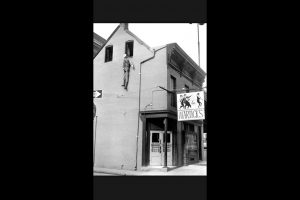Every now and then, when I meet someone who’s originally from Northwest Baltimore and grew up around the same time I did, I’ll mention that I lived as a kid near Price’s Dairy in the Woodlawn/Lochearn area and see a great big smile suddenly appear on their face.
“You lived near Price’s Dairy?” they’ll say, relishing the memory. “They had the best milkshakes in the world!” (A very true statement, by the way.) Price’s Dairy closed in the early ’70s, replaced by a McDonald’s (natch), but the sweet memory lingers on.
Similarly, there are names of certain old-time restaurants in town that still have the ability to pluck nostalgic heartstrings and rev up taste buds. Natives fondly remember such iconic (and long-gone) bistros as Marconi’s, Burke’s, the House of Welsh, Connolly’s, Miller Bros., the Eastern House, Haussner’s and, of course, the Pimlico Hotel, to name but a few. These were hallowed venues and institutions that helped weave the fabric of what Baltimore used to be, places where we enjoyed our magical meals and milestones together.
One place in particular I’ll never forget was Martick’s Restaurant Francais. That’s not so much because of the food there — although it was always quite good — but mainly because of the colorful and frequently acerbic owner/chef Morris Martick and the unique, curious world he created within the walls of that small, three-story brick house at 214 W. Mulberry Street (only blocks away from the fabled, now-defunct No Fish Today bar and my dad’s old liquor and packaged goods store on Eutaw).
Martick, who died in December of 2011 just a month shy of his 89th birthday, was among the last of Baltimore’s great characters, right up there with Mister Diz and Abe Sherman (who I’m proud to say once kicked me out of his bookshop for no discernible reason). With his trademark wool ski cap, ripped-up flannel shirt and faded (and sporadically unzipped) jeans, Martick looked like an aging seaman or a retired Teamster. He was a familiar sight walking around that hardscrabble side of town and going about his business, within spitting distance of the historic Emerson Bromo-Seltzer Tower and the National Shrine of St. Alphonsus Liguori.
“You tell me, boss,” he usually responded to any general query, with his trademark deadpan delivery. He was an iconoclast and non-conformist of the highest order who enjoyed good conversation and bohemian culture (and ruffling feathers) as much as he savored fine food and loathed artifice and malarkey.

For nearly four decades, Martick operated his French restaurant in the Civil War-era rowhouse in which he was born and lived almost his entire life, and where his bootlegger Polish-Jewish immigrant parents once ran a grocery, Prohibition-era speakeasy and tavern. He was proud that after he took over the family business, Martick’s became one of the first desegregated places in town and a hub of the salon scene, featuring live jazz (Billie Holiday reportedly once performed there) and works by the city’s finest emerging artists.
By the late ‘60s, however, Martick, an inveterate loner and lifelong bachelor, grew weary of the grinding existence of a watering hole proprietor and spent some time traveling around France’s Normandy region. Upon returning to Charm City, he refashioned his drinkery near “Chinatown” as a French bistro — “What can I say? I’m an idiot,” he’d laugh — and became a self-taught chef. He was known for an eclectic menu, particularly his bouillabaisse, sweet potato soup and Lobster a la Martick, all of which were hailed by local restaurant reviewers.
Dark, quirky, Spartan and inscrutable, the restaurant’s interior ambience was a mirror image of its rather dour owner. Its ramshackle, nondescript exterior was puzzling, too; on teenage weekend escapes downtown from vapid suburbia (via MTA buses), I used to walk by Martick’s and assumed it was an abandoned flophouse. I even often peered through the peephole and pressed the speakeasy-style buzzer, all to no avail.
Dining there was always a singular experience. “Whatcha recommend?” a customer once famously questioned Martick, who responded, “Another restaurant.” When asked by another patron what his best dish was, Martick shot back, “Confusion.”
Apocryphal tales? Bubbe meises? Perhaps. But anyone who ever met Morris would tend to think they’re true.
In 2008, Martick finally closed his doors, burned out from decades of city zoning battles, myriad staffing hassles, exorbitant overhead costs and general financial woes.
“I live in poverty, boss,” he kvetched to me on many occasions. “Not many people can live the way I do, boss.”
That might’ve been true, but not many restaurateurs can leave an indelible impression on diners the way Morris Martick did. Despite his beatnik proclivities and innate aversion to mainstream trends and bandwagonism, I think he’d grudgingly appreciate this “Era of the Foodie” we live in now and feel he was maybe just a few years ahead of his time.
Can you imagine Morris Martick and his fellow curmudgeon Gordon Ramsay of “Hell’s Kitchen” fame hanging out together and schmoozing about the restaurant trade? Now there’s an image, boss.
This November edition of Jmore is our second annual Food Lover’s Issue. Please enjoy it and … bon appetit!
Sincerely,
Alan Feiler, Editor-in-Chief





